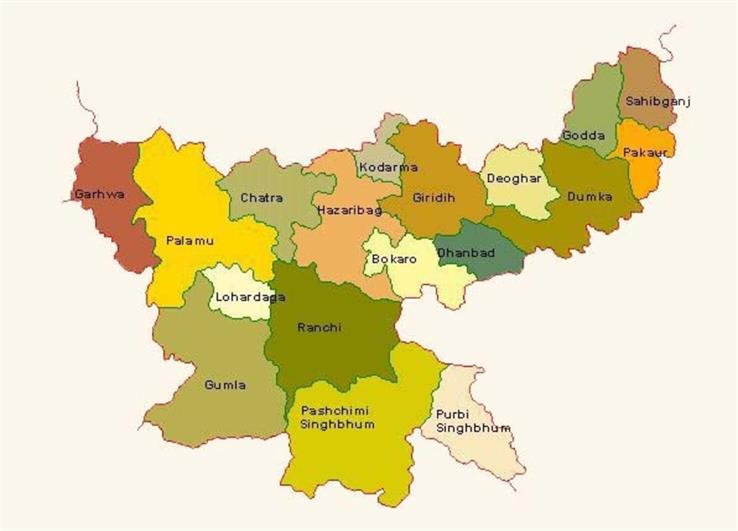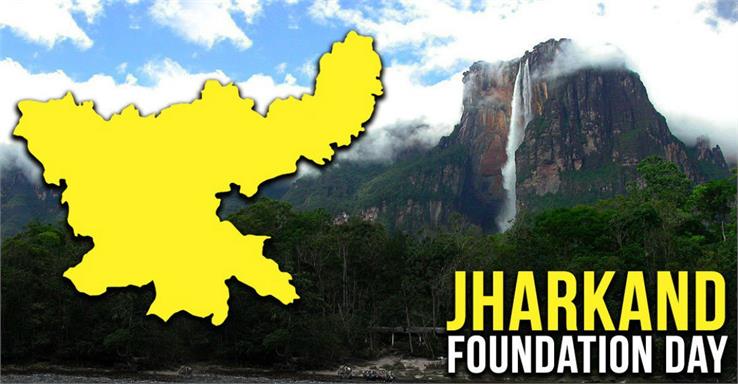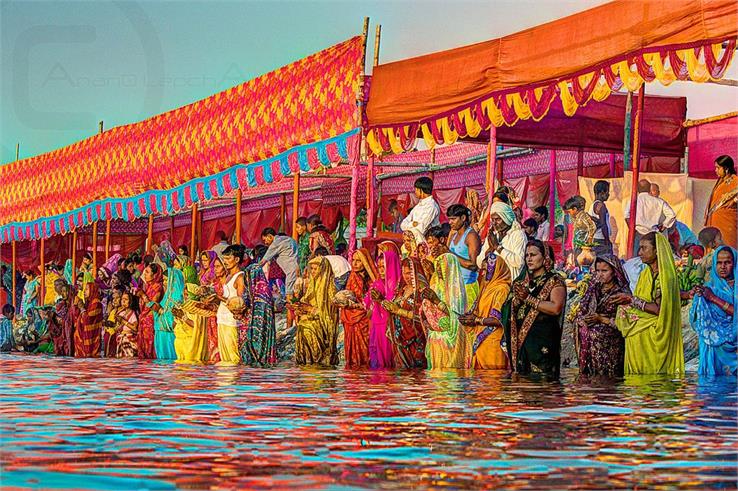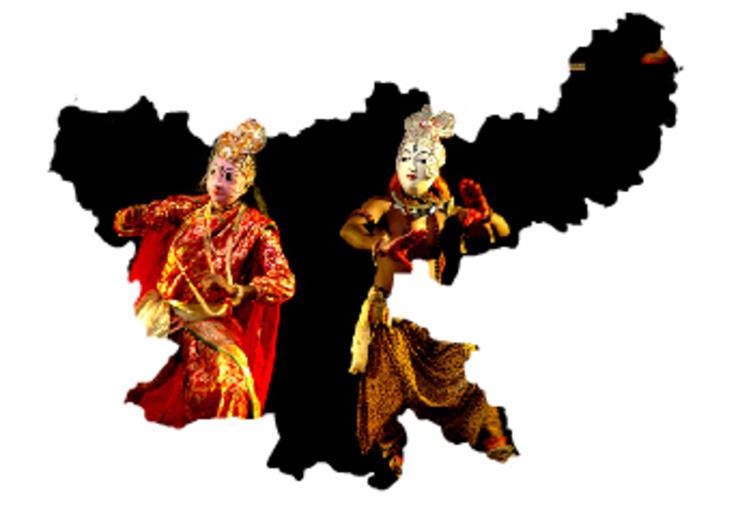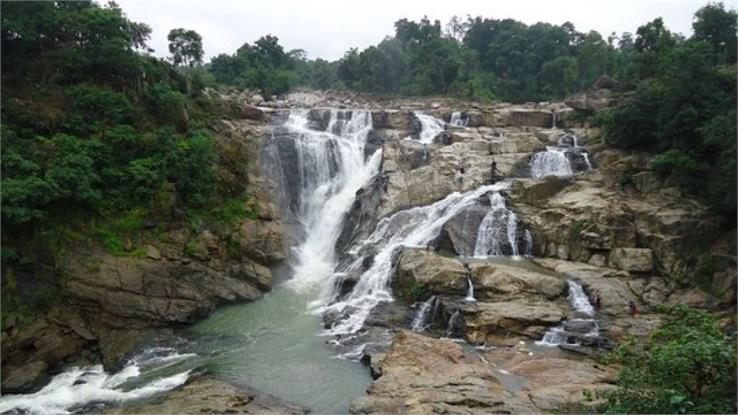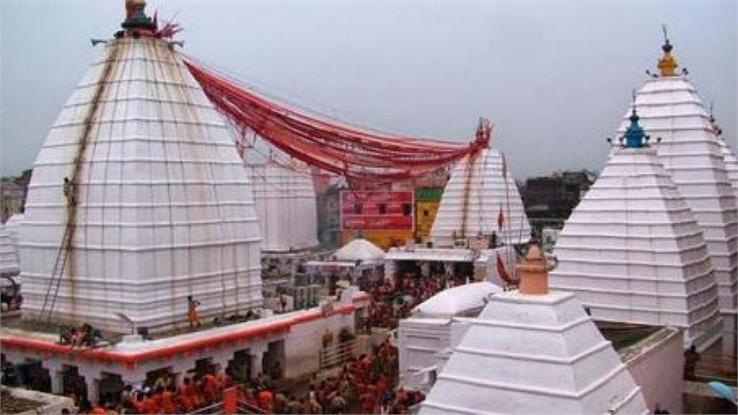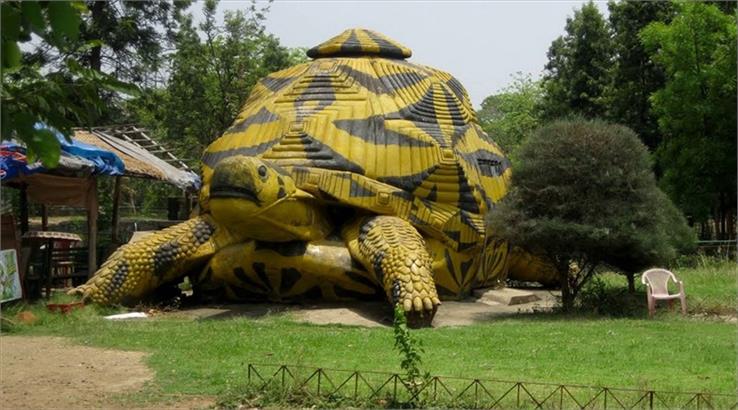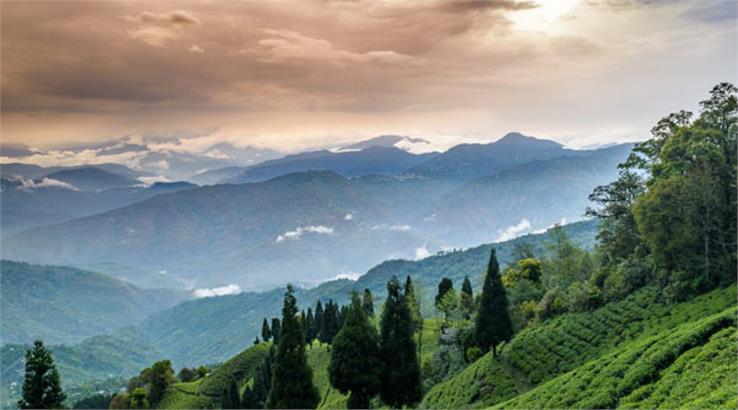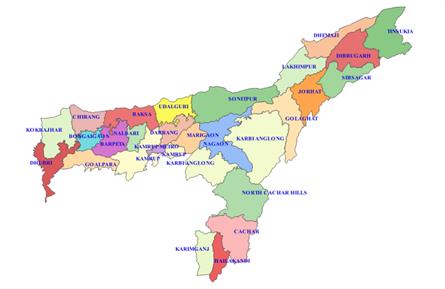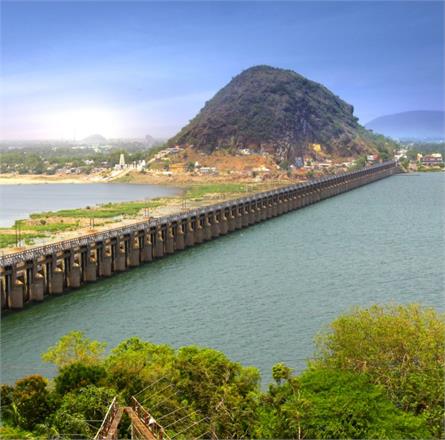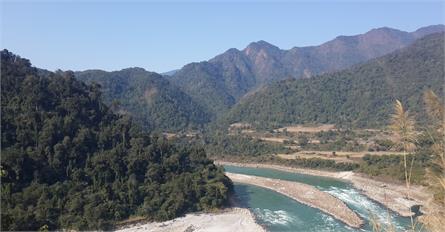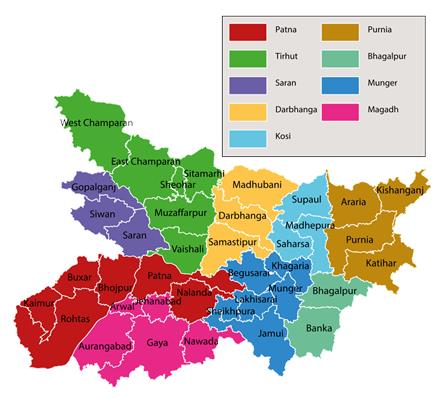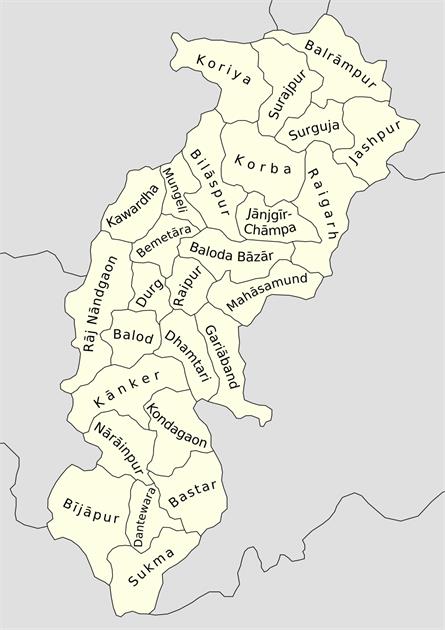Jharkhand - A Land of Forests
Known as the 'Land of Forests,' Jharkhand is a superior state of India appreciated for its beauty and attractive dense forests. Jharkhand has been recognized as the 28th state of India and owns many beautiful waterfalls, towering mountains, historical temples, and tourist hotspots.
One can visit the zoological and national parks to have a complete view of the picturesque nature and beauty. This state is located in the eastern part of India. Jharkhand was carved out of South Bihar in 2000.
West Bengal is bordered with Jharkhand in the east, Uttar Pradesh and Chhattisgarh in the west, Bihar in the north, and Odisha in the south. The literal meaning of Jharkhand is the ‘area of the forest.’ The term Jharkhand is believed to have been used about four hundred years ago in the sixteenth century. The state of 'Jharkhand' includes most of the southern part of Old Bihar and some tribal districts of Chhattisgarh, West Bengal, and Orissa. Jharkhand is home to about 90% of India's scheduled tribes. This region is considered a leading state in the proportion of forests throughout India and is famous for the conservation of wildlife.
Ranchi is the capital of the state, and Jamshedpur is the largest city in industrial affairs. Dumka is the deputy capital of the state. Other major cities of the state are Hazaribagh, Dhanbad, and Bokaro.
History
The roots of Jharkhand extend to the Magadha Empire. This region was known as Kukara in the Mughal period. The British came to rule Jharkhand after 1756 and the region was named Jharkhand back then. Tilka Manjhi of the Santhal tribe led a rebellion in 1771 against British rule. Soon after, in 1779, the Bhumij tribe fought against the British in West Bengal; after that, the Chero tribe in Palamu witnessed unrest. The tribal revolt of 1832 greatly affected the British administration in Jharkhand. The most protracted and last tribal rebellion took place under Birsa Munda in 1895 and lasted till 1900.

The state of Jharkhand gained its statehood on November 15, 2000, and declared as the 28th state of the Union of India. During the thirteenth century, King Jai Singh Deo of Orissa imposed his rule by asserting himself as the ruler of Jharkhand, the homeland of tribals. Jharkhand mainly consists of forest areas of the Chota Nagpur Plateau and Santhal Parganas. The state has various cultural traditions. After independence, the 'Jharkhand Mukti Morcha' started a regular movement which led to the formation of 'Jharkhand Kshetra Parishad' in 1995, and the state came into full existence. Babulal Marandi was the first Chief Minister of the state of Jharkhand. He left the Bharatiya Janata Party in 2006 and set up the 'Jharkhand Vikas Morcha.'
Geography
The total area of Jharkhand is 79,714 sq km, which is 2.4 percent of the total area of India. The entire state has been divided into five divisions and 24 districts.
Landscape
The major physical feature of Jharkhand is the Chota Nagpur Plateau, which is a series of plateaus, hills, and valleys, and spans almost the entire state and is mostly composed of crystalline rocks. Hazaribagh and Ranchi, these two central plateaus, are divided by the eroded and coal-rich sedimentary basins of the Damodar River. Their height is about 610 meters on average. There are more than 300 dissected, but flat peaks in the west, which are about 914 meters in height and are called pats. The highest point in Jharkhand is the conical granite peak of Parasnath (1,369 meters tall) which is situated at Hazaribagh. It is considered sacred by both the Jain Matawalambi and the Santhal tribes. The soil in the Damodar valley is sandy, while the plateau soil is mostly red.
Climate
The Jharkhand region is located in a tropical region. The climate of Jharkhand is generally tropical, but due to its high plateau, the weather is different from the surrounding. This region withstands the fluctuations of each season under the monsoon climate. Hence, the climate here is considered as ‘hot monsoon.’ In Jharkhand, the Tropic of Cancer passes through Netarhat, Kisko, Ormanjhi, Gola, Murhulsudi, Gopalpur, Pokhna, Gosanidih, Jhalbarda, Palkudari towards Bengal which means this line passes right in the middle of Jharkhand, due to which it is a hot monsoon area. However, the climate of Jharkhand has sufficient humidity, and it becomes somewhat different from the tropical climate.
Demography
According to the 2011 census, Jharkhand has a population of 32.96 million. The state males and females population are 16.93 million and 16.03 million, respectively. There are 24 districts and 32,620 villages in the state. Urbanization and industrialization have had adverse effects in these areas. A total of 68.5 percent of the population is of Hinduism, 13.8 percent of Islam, 13 percent of Zoroastrianism, and 4.1 percent are of Christian faith. The remaining population belongs to Buddhists, Jains, and Sikhs. There are many tribal communities in the state like Khond, Morwa, Oran, Santhal, Chabar, Kharia, Banjara, Barrack, Korba, Mal Paharia, Gond, Munda, Bathundi, Asura, Chik Birhor, Birjia, Hill Kharia, Soria Pahadia, Kisan, Savar, Pahariya, Kharwar, Mahli, Binjhiya.
Economy
Jharkhand is the second most mineral wealth producer in India, after Chhattisgarh. The state embraces minerals in the form of iron ore, copper, uranium, coal, bauxite, limestone, mica, and graphite. Jharkhand is expected to increase its per capita income in the coming years due to its rich mineral resources. There are many famous industrial cities in the state, such as Bokaro Steel City, Ranchi, Ramgarh, and Dhanbad. Sindri had the largest fertilizer industry, which is now closed. The first iron and steel factory is in Jamshedpur. Bokaro has Asia's largest steel plant. It has also been indicated that NTPC (National Thermal Power Corporation Limited) will produce coal in Jharkhand, which will lead to an investment of Rs 18,000 crore.
Agriculture
Out of the 79,714 sq km area of the state of Jharkhand, there are forests in 18,423 sq km area. Agriculture and allied activities are the mainstays of Jharkhand's economy. The area of arable land is only 38 lakh hectares.
Irrigation
Damodar, Mayurakshi, Barakar, North Koyel, Southern Koyel, Sankh, Suvarnarekha, Kharkai, and Ajay are the major rivers and the primary source of water in the state. The total sowing area in the state is 1.57 lakh hectares, out of which only 8 percent of the area gets irrigation facility.
Electricity
The established power capacity in Jharkhand is 2,590 MW. The sources are from 420 MW (Tenughat Thermal Power Station), 840 MW (Patratu Thermal Hydroelectric Power), 130 (Sikkidre Power Project), and 1,200 MW (Damodar Valley Corporation Thermal/Hydropower Project). The capacity of different power stations based on heat and hydropower can be 4,736 MW, which includes 686 hydroelectric power generation.
Industry and Minerals
Some of the major industries in Jharkhand are:

- Bokaro Steel Plant in the public sector
- Tata Iron and Steel Company (TISCO) in Jamshedpur in the private sector
- Tata Engineering and Locomotive Company (Telco)
- Timken India Limited (Jamshedpur)
- Bharat Coking Limited (Dhanbad)
- Khiladi Cement Factory (Palamu)
- Indian Aluminum (Muri), ACC Cement (Chaibasa)
- Central Coalfields Limited (Ranchi)
- Usha Martin, Usha Beltran, Uranium Corporation (In) Limited (Jaduguda)
- Hindustan Copper Limited (Musabani)
- TinPlate Company of India Limited (Jamshedpur)
- Indian Explosives Limited (Gomia) and
- Hindalco Bauxite (Lohardaga)
Jharkhand - Rich flora and fauna
Jharkhand is rich in flora and fauna. The National Park and Zoological Garden are located in the state of Jharkhand. Belta National Park is situated in the Latehar district, which has a large variety of wildlife. Apart from the diverse flora and fauna, the Palamau Tiger Reserve is also found in Jharkhand, which comes under Project Tiger. This reserved habitat has a variety of fauna and flora. The Hazaribagh Wildlife Sanctuary is magnificent, and the Betla National Park in Palamu is set in an ecosystem. Jawaharlal Nehru Biological Park is located in Bokaro Steel City in Zoological Gardens. The garden, spread over an area of 200 acres, is home to a wide variety of fauna and birds. There is also another zoo - Birsa Munda Biological Park, which is 16 km away from Ranchi. It is situated at a distance of many places, and many types of mammals are found here.
Government and Politics
In Jharkhand, the Chief Minister is the head of the government, and the governor is the legitimate head of state. Many regional and national political parties participate in Jharkhand elections. Communist Party of India, Bharatiya Janata Party, and Indian National Congress are the major political parties in Jharkhand. As far as the state level parties are concerned, the Jharkhand Mukti Morcha is the dominant political party in the state. Many registered regional parties take great interest in the politics of Jharkhand, but they have no significant political influence.
Education
According to the 2011 census, Jharkhand has a literacy rate of 67.63 percent. The state has a male literacy rate of 78.45 percent and a female literacy rate of 56.21 percent. Jharkhand has both government and private schools. The way of education varies from school to school. After the formation of Jharkhand, the Jharkhand Education Project Council launched four projects - DPEP, SSA, NPEGEL and KGBV for the promotion of primary level education. Due to the slow pace of work, the government is on its way to achieving 100 percent enrollment in schools. Some of the famous schools in Jharkhand are:
- De Nobili School
- Delhi Public School
- DAV Hehal
- Shishu Mandir
- Oxford Public School
- Loyola School
- Kendriya Vidyalaya
- St. Thomas School
- Sacred Heart School
- Chinmaya Public School
- St. Xavier School
- Surendranath Centenary School
Culture

Due to the dominance of tribes in the state, nature has great importance in its culture and life. As a tradition, people buy sacred plants and plant them in the courtyard of their home. Other customs that are considered by the people are Jatiya Puja, Karma Puja, Sirhul, etc. Tusu fair, also known as Pausha fair, is held during Makar Sankranti. Tusu fair is a harvesting festival. The entire Chota Nagpur region celebrates the Karam Festival with great enthusiasm and gaiety. It is celebrated for 15 days after Kanwar Shukla Paksha. People buy new clothes, vermilion, oil, oatmeal and prepare the dish for the preparation for this festival. Boys and girls are given warm clothes by their families, indicating that they are unmarried.
Language
The main language of Jharkhand is Hindi. People here speak many languages. However, the three major language groups are Munda, Dravidian, and Indo-Aryan. Santhali, Ho, Bhoomji, Mundari, and Kharia come under the Munda language. Bengali, Maithili, Sadri, Panchpargania, Khortha, Oriya, Pagpuri, and Kurmali are part of the Indo-Aryan language. Korva, Oraon, and Paharia are Dravidian languages.
Areas such as Godda, Dumka, Saraikela, Pakur, Sahibganj, Kharsawan districts, and east Singhbhum speak Santhali language. On the other hand, Mundari dialect in many areas includes Gumla. West Singhbhum, Ranchi, Latehar, Khunti, and Simdega. People vocalize Ho language in West Singhbhum and Seraikela, Kharsawan districts.
Transportation
Ranchi, the capital of Jharkhand, is well connected to the entire country by road and rail. National Highway 2, 27, and 33 passes through this state. The second major city of this state, Tatanagar (Jamshedpur), is situated on the Delhi-Kolkata Main Railroad, which is 120 kilometers south from Ranchi. The only international airport in the state is Ranchi's Birsa Munda International Airport, which is one of the major cities in the country; Mumbai is connected to Delhi, Kolkata, and Patna. Regular flights from Indian Airlines and Air Sahara connect you to the city by air. The nearest international airport is Netaji Subhash Chandra Bose Airport in Kolkata.
Fair and Festivals

The background of Jharkhand is associated with nature, in the same way, their festivals are also related to nature. Whether it is animals or trees, plants, barn fields, different festivals are celebrated there according to the seasons.
- Sarhul Festival: This festival is celebrated on the arrival of spring when new flowers bloom in the Sal tree. People of the tribal community use this flower only to worship the Goddess of their village. There are dancing and singing ceremonies held around the tree throughout the day.
- Tusu/Makar Parva: A festival celebrated throughout India, it is celebrated at the time of Makar Sankranti in Jharkhand by the name of Tusu, in which people commemorate the first harvest in the joy. The festival is celebrated for about a month by organizing fairs in different places and there are contests of statues and Chaudals of great Tusu Devi.
- Karma Parva: Karma Parva celebrated in the month of Bhadra, the deity of Karma (Lord of Power) is worshiped by bringing fruits and flowers from the jungles with dancing songs. It is also called the festival of the youth of Jharkhand.
- Sendra Festival: Sendra festival celebrated on Baisakh Purnima, the tribesmen take their handmade arrows to hunt in the jungles and share the meat of the hunted animals. The government has also imposed many restrictions due to animal poaching in this festival.
- Bhagata Festival: Bhagata festival is celebrated on the days between spring and summer. People keep fast throughout the day and bathe the religious Pahan (Pandit) in the river, plus take them to the place of worship. Then bravery acts are performed throughout the day.
- Bandana Festival: On this day, people clean their animals and feed them good food, folk songs are also sung for them.
- Mage Porob: In the festival of Mage Porob, people harvest their new crop, store, and worship them. It is celebrated between January and February. In the evening, people celebrate it by dancing and playing a desi musical instrument called Horn Baja.
To commemorate these unheard festivals, one must visit Jharkhand once and get to know the culture, tradition as well as the fascinating tribal tribes of the state.
Best time to Visit Jharkhand
The best time to visit the state of Jharkhand is considered to be between October and March. During this season, tourists can visit significant tourist places in Jharkhand state without any hassle.
What to Eat
Jharkhand State is famous for its beautiful tourist places, but the cuisine of the state is marvelous. The taste of delicious food of Jharkhand will make you lick fingers. The local food of Jharkhand includes rice, roti, dal, tarkari, sweets, arsa roti, sweet khaja, thekua, litti, dhuska, etc.

The art and culture of Jharkhand are recognized all over the country. The food and beverages are quite different from the other parts of the country, as most of the area is connected to the forest. Wild greens and rice are most commonly used in the cuisine. When it comes to the lip-smacking food of Jharkhand, rice dishes are the most popular and liked food in the state. Rice is produced in almost all areas of Jharkhand, and various dishes made from rice are offered in different forms. The following are the most appetizing delicacies of the state.
Pitha with coriander sauce
It is made by mixing flour, semolina, and rice. There is the stuffing of vegetables and lentils. Pitha is also made in many other states, but you will not find a taste like Jharkhand. It is practiced to eat it with coriander sauce.
Malpua of Jharkhand
Malpua is a common dish and is also served in other states of the country. Although in Jharkhand, Malpua is earlier used in religious and auspicious works. One must eat the juicy Malpua during their visit to the state.
Chilka Roti
Chilka Roti of Jharkhand is one of the famous foods of the state. It is prepared from gram flour and rice, which looks like a dosa, but its taste is excellent. This roti is crammed with chana dal chutney.
Dhuska
You can get the taste of Dhuska (Dhooska and Dushka) not only in the streets of Jharkhand but almost in every residence. Dhuska is a breakfast dish prepared with the rice-dal solution and served with black gram gravy vegetables.
Thekua
Thekua is mainly considered as a dish of Bihar and Jharkhand. It is prepared by mixing wheat and rice flour. On the Mahaparva of Chhath, Thekua is offered to the Chhath Maiyya.
What to Shop
Shopping in Jharkhand is a time filled with fun and excitement, as the state is famous for traditional handicrafts and unique metalwork items. The tribal people play a significant role in the rich culture and tradition of the state, who make unique and ethnic handicrafts. The handicraftsman of Jharkhand is also praiseworthy. Here are a few remarkable things in Jharkhand you must shop:
- Tribal handicraft
- Paitkar painting
- Stone carving
- Woodcraft
- Bamboo work
- Metal and ornament work
Places to Visit
During the trip to Jharkhand, tourists must visit the following major attractions. Jharkhand has many scenic, historical and natural places that attract tourists.
Ranchi - Capital of Jharkhand
Ranchi is an attractive tourist destination of the state, Jharkhand. Ranchi, popularly known as the city of waterfalls, is situated at an altitude of about 700 meters above sea level.
Ranchi is soon recognized as one of the important destinations in India in terms of tourism. Ranchi has attractive waterfalls and hills, which attract tourists and has become a favorite place among tourists. The most popular sites of Ranchi are Ranchi Hill, Tagore Hill, Kanke Dam, and Hundru Falls. Ranchi city also has a variety of trees and wildlife. Sal, Mogha, and Simul are some of the rare varieties of plants found here.

- Dassam Falls: Among the famous places to visit in Jharkhand, Dassam Falls is prominent. The Dassam Falls is located near the village of Taimara in the Ranchi district, on a tributary of the Suvarna Rekha river and falls below the height of 144 feet. The Dassam waterfall with rocky slopes is known as a spectacular picnic destination. A large number of tourists come to visit here.
Other top attractions to visit in Ranchi are as follows:
- Hundru Falls
- Jonha Falls
- Panch Gagh Falls
- Birsa Zoological Park
- Ranchi lake
- Kanke Dam
- Jagannath Temple
- Nakshatra Van
- Sun Temple
- Pahari Mandir
- Rock Garden
- Deer Park
Deoghar - The Religious Place
Deoghar is one of the major religious places in the state of Jharkhand, which is known for one of the 12 Jyotirlinga temples of Lord Shiva. The temple of Deoghar is famous for the name of Lord Baidyanath. Deoghar Baidyanath Dham is glorified in the Shravan month according to the lunar calendar of Hinduism. The significant attractions of Deoghar include Baidyanath Dham, Nandan Pahar, Satsang Ashram, etc. Other major tourist sites are as follows:

- Baba Baidyanath Temple
- Basukinath
- Trikuta Hills
- Satsanga Ashram
- Mayurakshi River
- Harila Jori
- Shiv Ganga
- Rikhia Yogashram
- Jalsar Children Park
- Nandan Pahar
- Kathikund
- Kubndeshwari
- Ajgaivinath Temple (Ajgaibinath Temple)
- Hathi Pahar
Jamshedpur - The Steel City
Jamshedpur is one of the biggest and prominent tourist destinations of Jharkhand. This charming city Jamshedpur was named after JamsetJi Tata in 1919. The eighth-largest steel-making company in the world is located in Jamshedpur City. The major attractions of Jamshedpur are Jubilee Park, Dalma Wildlife Century and Tata Steel Zoological Park, etc.

- Dalma Hills
- Russi Modi Centre of Excellence
- Jubilee Park
- Jubilee Lake
- Jayanti Sarovar
- Dimna Lake
- Tata Steel Zoological Park
- Tribal Culture Center
- Sir Dorabji Tata Park
- Bhuvaneshwari Temple
- Parsee Fire Temple
- Sakchi Gurudwara
- Sakchi Masjid
- St. Mary’s Church
Hazaribagh
Hazaribagh, a famous tourist destination in Jharkhand, is located at a distance of about 95 km from Ranchi, the state capital of Jharkhand. The Hazaribagh tourist destination offers a beautiful view of dense forests, rock formations, magnificent lakes, and natural attractions. Major attractions of Hazaribagh include Canary Hill, Rajrappa Temple and Wildlife Century, etc.
- Hazaribagh Lake
- Canary Lakes
- Hazaribagh Wildlife Sanctuary
- Hazaribagh National Park
- Isco Rock Art
- Rajrappa
- Konar Dam
- Bhadrakali Temple
- Sanskriti Museum of Art Gallery
- Urban Haat
- Megaliths of Hazaribagh
Netarhat - Queen of Chotanagpur
Netarhat tourism, the natural place of Jharkhand, attracts tourists for its beauty and majestic sunrise and sunset point. Netarhat tourist destination has also been labeled as the queen of Chota Nagpur. Netarhat is located in the Latehar district of Jharkhand.

- Netarhat Hills
- Koel View Point
- Sadni Falls
- Magnolia Sunset Point
- Upper Ghaghri Falls
- Lower Ghaghri Falls
Betla National Park
Betla National Park is a beautiful national park in Jharkhand tourism that is best known for wild elephants. The animals that roam in Betla National Park are leopard, elephant, tiger, which are the center of attraction of the tourists visiting here. The area of Betla National Park is 979 km.
Jharkhand, the 'land of forests,' is endowed with extensive coal mines and steel plants. The state is mainly surrounded by forest. While wandering this beautiful state, tourists can feel the pleasure of living in the lap of nature.
Jharkhand, 'land of forests,' is endowed with coal mines and steel plants. The state is mainly surrounded by forest. While wandering this beautiful state, tourists can feel the pleasure of living in the lap of nature.


